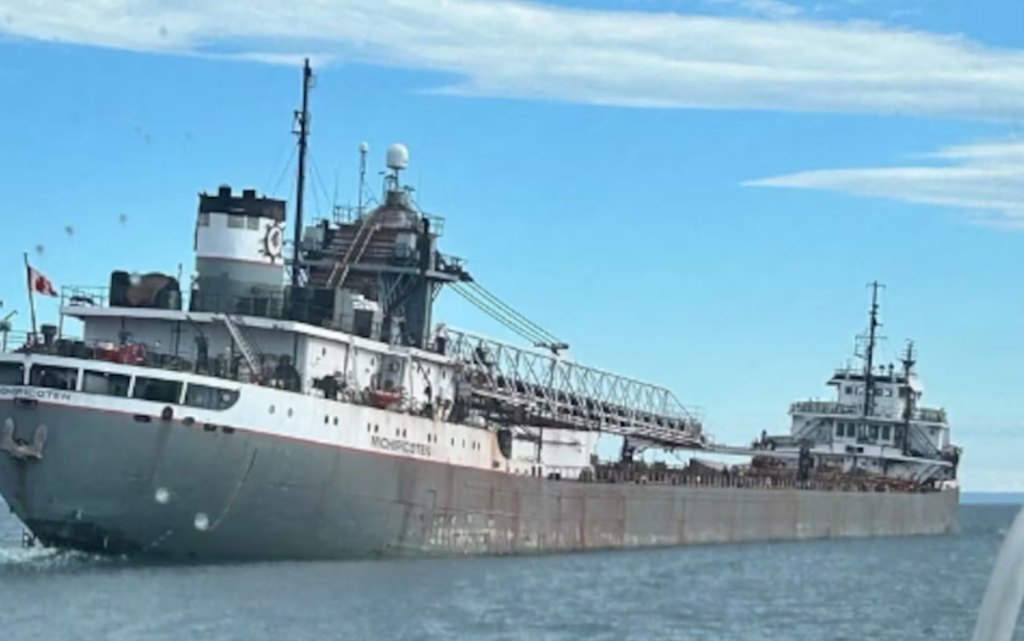
The U.S. Coast Guard has revealed that a substantial 13-foot crack along the bottom of the Michipicoten bulk carrier could be the reason the freighter took on water in Lake Superior. While a collision with a submerged object hasn’t been ruled out, the prevailing theory points towards fatigue or structural failure, as stated by Lt. Joseph Snyder of the U.S. Coast Guard.
On Saturday morning, the Michipicoten, a 689-foot bulk carrier, faced a harrowing ordeal as it began to take on water in Lake Superior. Despite the crisis, the vessel managed to safely anchor in Thunder Bay, Ontario, by the afternoon, thanks to the swift response and coordination between U.S. and Canadian authorities. The U.S. Coast Guard’s Northern Great Lakes Sector played a crucial role, providing assistance to ensure the vessel’s safe anchorage.

The incident unfolded at approximately 7:00 a.m. when the Michipicoten reported flooding. Initial reports suggested the freighter might have struck something in the lake, leading to the breach. In response, the Coast Guard deployed two helicopters from Air Station Traverse City and a response boat from Station Bayfield to assist the distressed vessel.
Adding to the rescue efforts, the Edwin H. Gott, a 1,000-foot ship from the Great Lakes fleet, was diverted to aid the Michipicoten. Captain Kean Weekly and his crew provided crucial support by creating a lee to shield the Michipicoten from waves and launching rescue boats. As a precautionary measure, 11 of the 22 crew members aboard the Michipicoten were evacuated, with assistance from a National Park Service boat from Isle Royale.
Eric Peace, Vice President of the Lake Carriers’ Association, praised the teamwork and quick thinking that ensured the Michipicoten reached Thunder Bay without sinking. The coordinated efforts of the Edwin H. Gott’s crew and the U.S. Coast Guard highlighted the resilience and readiness of maritime response teams.
While no injuries have been reported, the incident has prompted a thorough investigation to determine the exact cause of the flooding. The Michipicoten will undergo a detailed examination at a dry dock after unloading its cargo, which will hopefully provide more insights into the structural damage and the events leading up to the crack.
The cooperation between the U.S. Coast Guard and Transport Canada is ongoing as they work to uncover the full details of Saturday’s incident. The crack discovered by divers underscores the importance of regular maintenance and inspection in preventing such occurrences.
As the Michipicoten remains anchored in Thunder Bay, all U.S. Coast Guard assets have been released from the scene, though they continue to monitor the situation closely. The shipping community awaits further updates on the investigation, which will shed light on how to prevent similar incidents in the future.
The maritime industry relies heavily on the structural integrity of its vessels, and incidents like this serve as a stark reminder of the challenges faced on the Great Lakes. The Michipicoten’s ordeal, though alarming, also showcases the effectiveness of emergency response protocols and international cooperation in ensuring the safety of maritime operations.
Source:TV6

